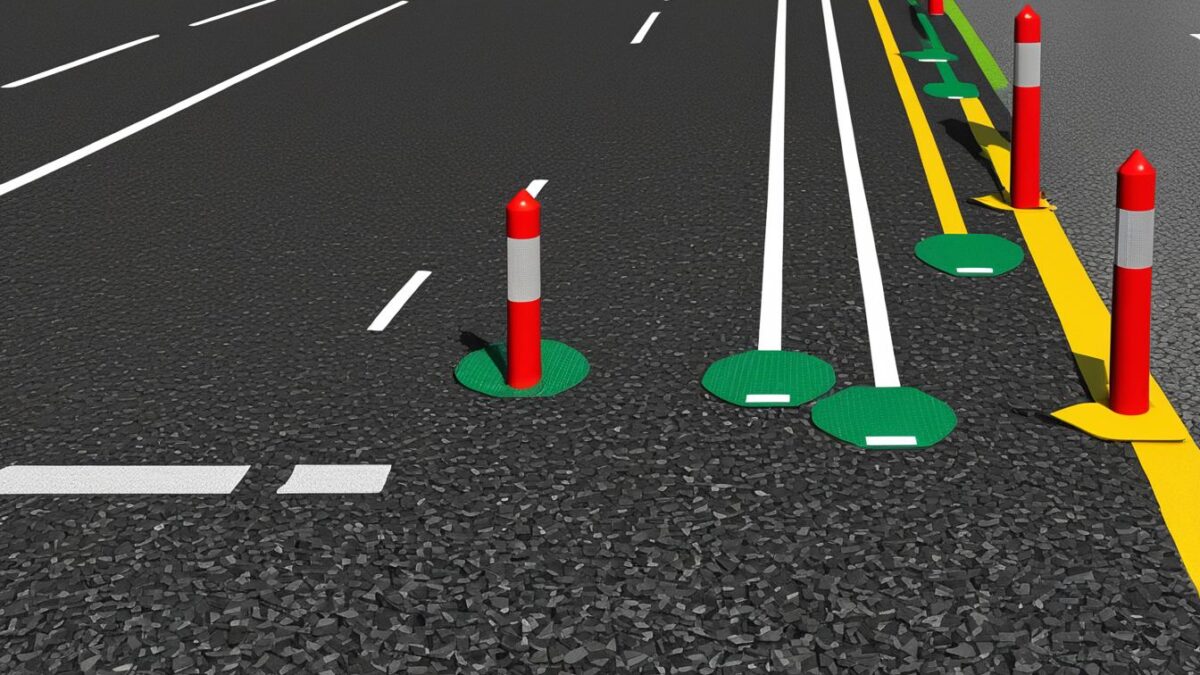Delineators are crucial in construction and design for maintaining safety, order, and aesthetics.
Bollards
Bollards are robust delineators found in urban areas, designed to block vehicle passage and protect pedestrians.
Available in various shapes and sizes, they serve both functional and decorative purposes.
Bollards ensure pedestrian safety, secure buildings, and maintain foot traffic pathways, while also complementing architectural designs through aesthetic options.
Posts
Delineator posts are useful boundary markers often found in car parks, aiding in traffic direction and accident prevention.
They offer flexibility, being either temporary or permanent, which is ideal for dynamic construction environments.
Architecture students can benefit from understanding their role in spatial planning for safety and navigation.
Barriers
Barriers in construction are essential for safety, enclosing or segregating areas to protect the public and separate work sections.
They are portable for easy relocation and can be customised with branding and aesthetics, combining utility with visual appeal.
Cones
Traffic cones are essential for temporary guidance, directing traffic on roads and at events due to their lightweight and portable nature.
They offer lessons in visual communication and space management with their bright, reflective design elements enhancing safety and visibility.
Materials Used in Delineator Manufacturing
- Plastic: Plastic delineators, such as cones and posts, are ideal for temporary setups due to their lightweight and cost-effectiveness. Available in various colours for coding, they’re suited for short-term or indoor projects. However, they can be damaged by harsh weather or heavy impacts, which limits their durability.
- Steel: Steel is favoured for bollards due to its strength and durability, ideal for high-traffic or secure areas. Though it may have a higher upfront cost, its longevity makes it a worthwhile investment. Steel’s aesthetic appeal is enhanced with finishes like powder coating, providing protection against rust. Incorporating steel delineators adds sophistication to urban projects.
- Rubber: Rubber delineators, used as bases for cones and posts, offer flexibility, impact resistance, and durability, making them ideal for areas near vehicles. They are environmentally friendly, often made from recycled materials, and provide non-slip safety for interior and exterior use.
Conclusion
Delineators are crucial in construction and design, guiding pedestrian flow and marking secure zones to ensure safety and aesthetics.

